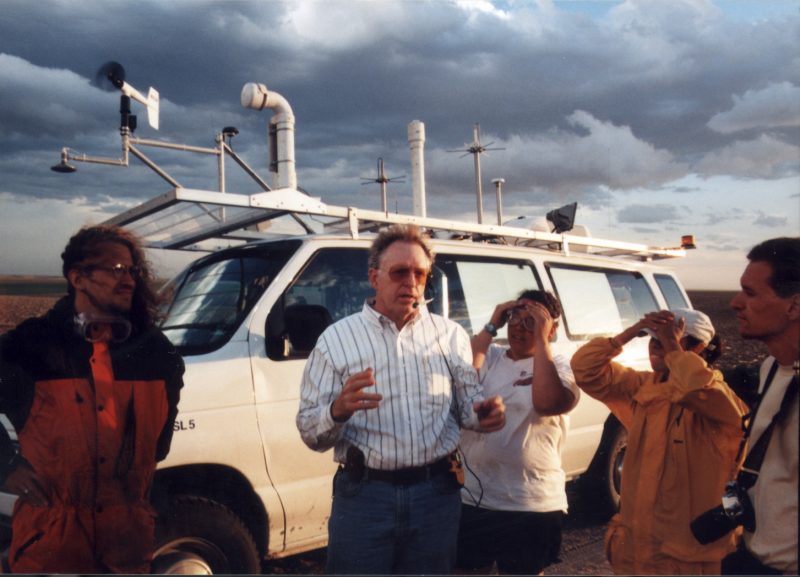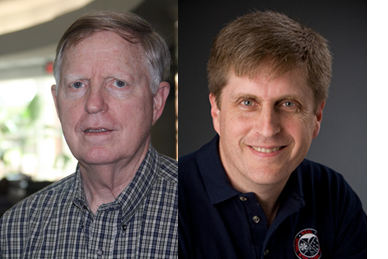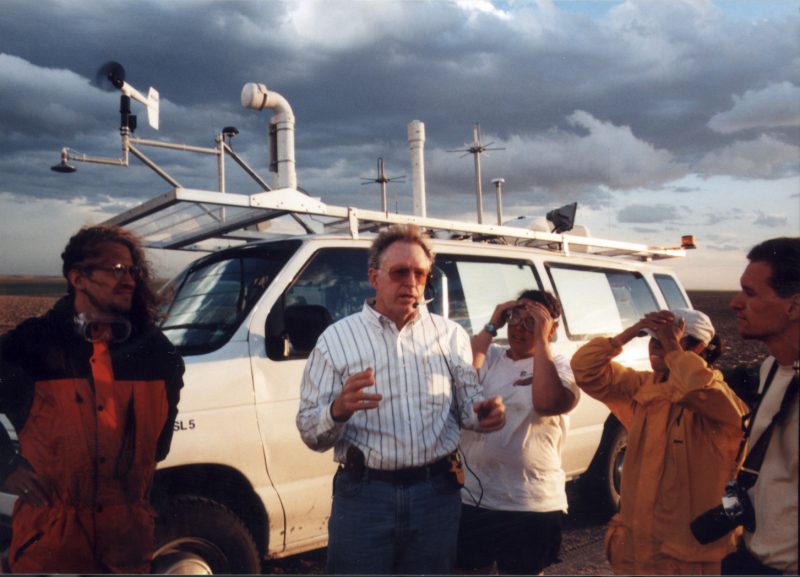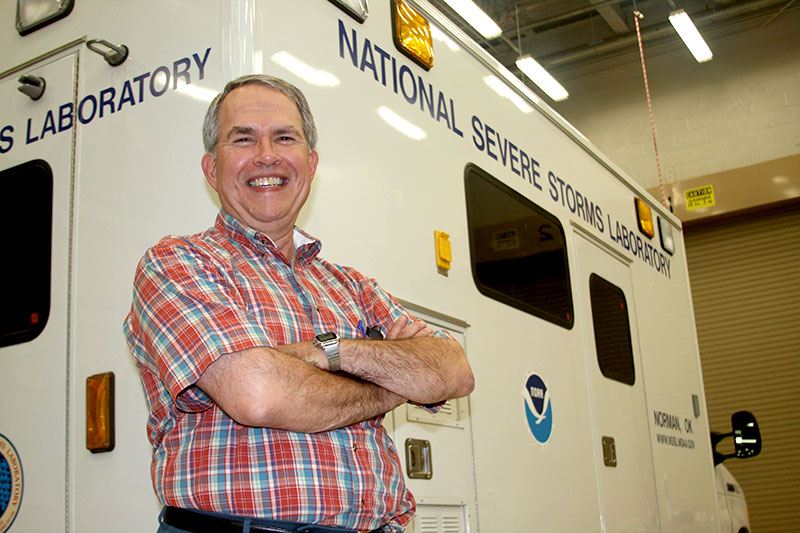
NSSL retiree W. David Rust has been elected Fellow of the American Geophysical Union, the first NSSL scientist to receive the honor.
He joins three other NOAA scientists who will be celebrated during the Honors Ceremony and banquet at the 2014 AGU Fall Meeting Dec. 17 in San Francisco. They are Michael J. McPhaden and James Overland, both with the NOAA Pacific Marine Environmental Laboratory; and David D. Parrish with the Chemical Sciences Division of the NOAA Earth System Research Laboratory.
Rust has made significant and revolutionary contributions to thunderstorm science, especially through observation platforms from mobile laboratories to instrumented storm-penetrating balloons. Rust’s measurements have contributed much to our present understanding of how storms become charged and produce lightning.
It was during graduate school at New Mexico Institute of Mining and Technology in Socorro, New Mexico, that Rust stumbled into the field of atmospheric electricity. He was measuring radon flow in mountain canyons for his Master’s work, but found something magical about the weather. In his spare time he helped with thunderstorm projects, eventually moving his research into atmospheric electricity. His doctoral dissertation became the foundation of his career: the electrical conditions near the bases of thunderclouds using measurements from a tethered balloon.
“Tethered doesn’t work,” Rust said, so he built something that did. As a post doctoral fellow in Boulder, Colorado, he used “free-ballooning” to measure the electric field inside thunderstorms. “I think that probably mobile ballooning would be my biggest career success,” Rust said.
Rust directed NSSL’s fleet of mobile research facilities (excluding mobile radars) for decades. Beginning with the mobile lab he helped build at NSSL out of an old Suburban truck in 1979, the armada now includes mobile ballooning facilities, field coordination vehicles, mobile mesonet vehicles and mobile radars. Rust saw the value in going out to find the storms rather than waiting for them to come to NSSL. Countless other scientists and research projects have benefited from the ability to measure temperature, pressure, dew point, wind speed and direction, the electric field, and even return stroke velocities in a storm. “I get a great deal of satisfaction supporting other research,” he said.
Rust co-wrote a graduate level textbook with NSSL’s Don MacGorman, “The Electrical Nature of Storms.” A review by a colleague said, “The book is clearly the best compilation of material on storm electricity that exists today.” He has also advised and mentored numerous graduate students over the years.
Rust has a message for his colleagues: “I really appreciate the help and collaboration of the staff at NSSL during three decades. Whatever success I’ve had professionally has been in large part the result of collaborations with, and a tremendous amount of help from NSSL people.”
Established in 1962, the Fellows program recognizes AGU members who have attained
acknowledged eminence in the Earth and space sciences as valued by their peers and vetted by a Union- wide committee of Fellows. Primary criteria for evaluation in scientific eminence are a major breakthrough or discovery, paradigm shift, or sustained impact.



